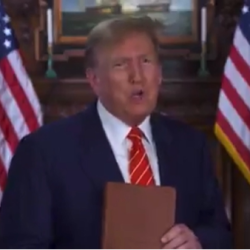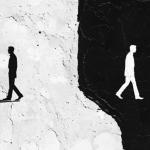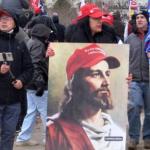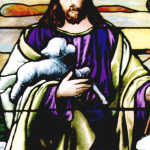R3 Editor
When we got up Monday morning, we headed to class to start the “classroom portion” of our time together. After a rundown of the syllabus and an explanation of the class and assignments, our host, Deb Krause shared her involvement with the movement. She started by telling us how the movement has shaped and influenced her actions—offering a powerful testimony of how this movement connected with her work as an academic and New Testament scholar. In addition, Deb also offered us a concrete corrective to a pervasive narrative that clergy were not present during the early days of the movement. To the contrary, clergy were not only present but also present afterwards creating space and place for activists to share their experiences. While it is true that the majority of clergy did not respond to the early events in Ferguson by standing with protesters in the street, some did and continue to do so.
What Deb also did for us was to help us to see how churches COULD get and stay involved. She spoke of not only the prayers that clergy offered in the streets and in some cases becoming human shields between grief-stricken and angry protesters and overzealous law enforcement, but also the follow-up meetings, workshops, and continued dialogue. One such meeting that she and other clergy were apart of was the Teach In and Preach In Tent Revival for Social Justice. She and other clergy also drafted one of the earlier statements on the events in Ferguson along with contributing to worship resources centered on the events in Ferguson. She continues to participate in discussions centered on race and discerning other ways for clergy and churches to get and stay involved. What inspired and captured student’s attention is that despite all of this and despite her work as academic dean at Eden Theological Seminary and as well as a host of other duties (wife, mom, etc.); she also found time to engage her body in the streets of protest. For Deb, the bible in not some ancient text, but more of a “popup book” that when one opens it and one is in tuned with the Spirit, things in it just pop up at the right time (and many times in inopportune times), leading, pushing, and calling us to live authentic and whole lives.
 |
| Mike Brown’s Memorial |
After our classroom time and after lunch, we headed towards what I knew would be a powerful moment for us—to the place where Darren Wilson killed Michael Brown. I knew we had to see the site for two reasons. First, I had been before and found the site—the sacred space so moving and powerful and I believed that others would as well. I can only imagine what the community must have felt as they saw someone lay dead on the pavement for four and a half hours. As I reflected again on seeing the memorial, I also noted that if I had known someone in Mike Brown’s family, they could have called me in Memphis, telling me that Mike Mike was shot, I could have gotten in my car, drove four hours to Ferguson and the body would have been still there. The people in this community felt disrespected in the highest order.
Second, and more importantly for the class, the site offered an opportunity for theological reflection. Since a major emphasis of the class was theological reflection, I wanted students to offer reflection at this site. Therefore, when approaching the sacred space, many students immediately became quiet, stood still, or just got away for a moment to gather themselves. I remember as I quietly reflected on my time there, I said to myself, “This here is sacred space.”
Second, and more importantly for the class, the site offered an opportunity for theological reflection. Since a major emphasis of the class was theological reflection, I wanted students to offer reflection at this site. Therefore, when approaching the sacred space, many students immediately became quiet, stood still, or just got away for a moment to gather themselves. I remember as I quietly reflected on my time there, I said to myself, “This here is sacred space.”
I suggest that these “roadside,” “urban” or “street memorials,” are sites for theological reflection because, as I shared with the class, it gives insight on how people constructed ideas of the sacred in the aftermath of a tragic and sometimes senseless death. It is the way people attempted (and continue to attempt) to make sense out of a messed up situation. I wanted to know what students saw and/or heard. To probe a little further, I then asked how the readings shaped students’ reflections. I sometimes asked students to offer one or two words that describe their experience or just simply ask
, “Where did you see God/Spirit today?”
 |
| Mike Brown’s Memorial |
The roadside memorials and the art that people attach to them do three things. First, they remind people that death happened here. In a society that does not like to talk about death or wants to move away from death as quickly as possible, memorials force us to remember that a death happened here. Second, these memorials remind us that the community does not forget the person who has died. They proclaim that the community not only remembers the deceased, but that the community also loved the person. This may help with the grieving process.
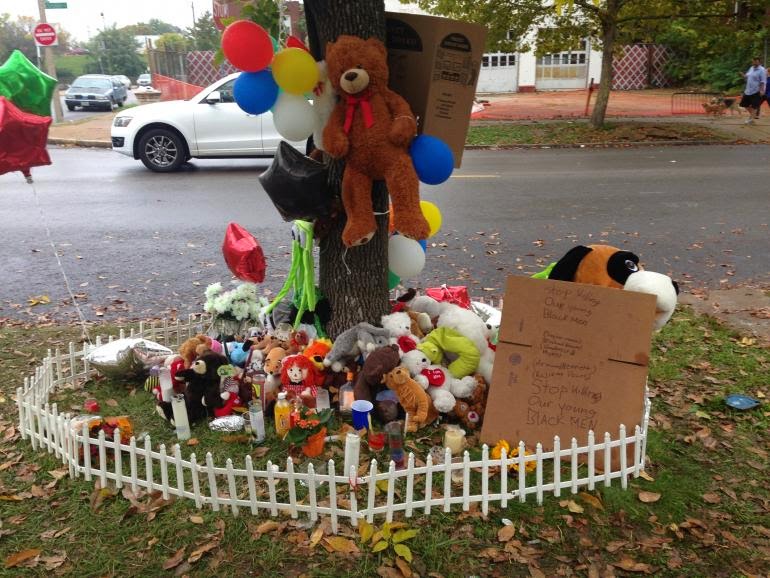 |
| Vonderitt Myers’ Memorial |
Finally, I suggest that these memorials offer for church leaders creative ways to do liturgy and other worship activities within their own congregations. For example, this may lead some to offer “services” on the street while people are creating memorials or to offer prayer services and reflections on not only death, but also life as healing continues—for both individuals and the community.
The site of the Michael Brown memorial—as well as the Vonderitt Myers memorial, and the art associated with them had a profound impact on the students. First, some discovered the “Divine” in what they typically do not think of as “art.” With this discovery, students can see, expand, or construct the Divine in much bigger and deeper ways. Second, seeing the Divine in these memorials forms, students, if they did not realize before, now understand that we do not “bring” the Divine to anyone—but if we are still enough, with ears to hear and eyes to see, we can discover that the Divine is already there.
After leaving the memorial sites, we headed to MoKaBe’s—a coffee house that has been very instrumental in the movement. Leading up to the Grand Jury announcement, MoKaBe’s opened its doors to protesters and activists providing a safe space for “activists to stay warm, use the bathroom, charge their phones, and get something to eat and drink.” In return, some on the message board St. Louis CopTalk branded MoKaBe’s as supporters of “cop killers” while others simply vowed to take their business elsewhere. The night after the Grand Jury decided not to indict Darren Wilson for the killing of Mike Brown; law enforcement officials fired tear gas on protesters assembled at MoKaBe’s. We wanted to come here to process and reflect on our day. We felt as if we had a good day and now, coming to this “safe and sacred” place, we could unpack what we heard and saw on that day. We briefly met the owner of MoKaBe’s, Mo Costello, who thanked us for coming and learning more about the movement. After our gathering at MoKaBe’s, the plan was to head to dinner and to prepare for the next day’s class.
However, while waiting in line for my order, someone walked in and stood directly behind me. When I noticed who it was, I introduced myself and told him why I was in the area. I asked him if he would not mind coming just to say hello to the class since they had already heard of him and some even had seen him on YouTube giving lectures or interviews. He readily agreed to come to our table after ordering his food to say hello to the class. We he came over to our table, the “hello” turned into a 90-minute session—complete with a question and answer section that succinctly tied together many of the issues of the movement. Little did I know that things were about to be turned up real quick. We were about to have an impromptu evening with the Rev. Osagyefo Sekou.
To be Continued……….
Follow Andre on Twitter @aejohnsonphd





